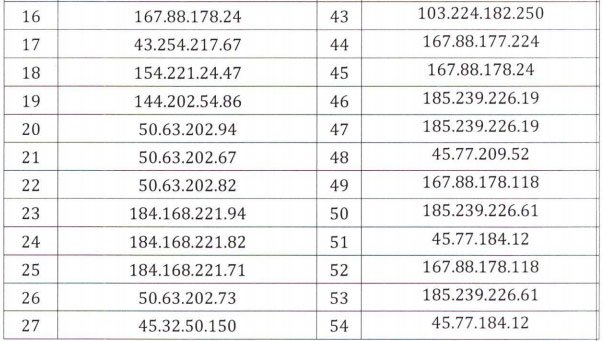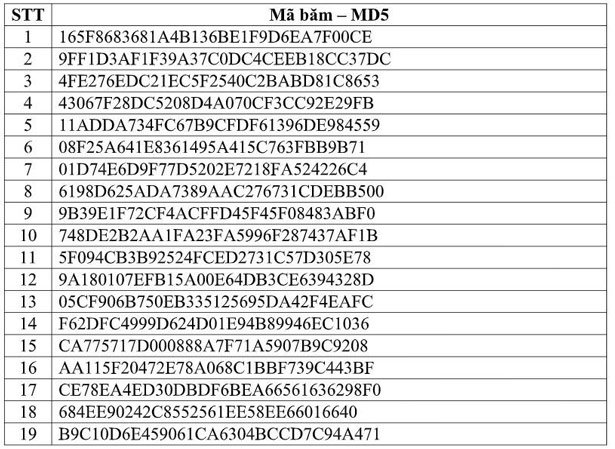Discovering a large-scale APT attack into Vietnam, users need to quickly download the malicious tool
Recently, the Department of Information Security has discovered a large-scale targeted attack (APT) campaign taking place in Vietnam's cyberspace. The host of this attack is located outside of Vietnam. The objective of this APT attack campaign is to spread malicious code into the information systems of Government agencies and to the national important national information infrastructure system of our country.
This morning (October 30, 2019), the Department of Information Security issued an order to coordinate and rescue incidents to specialized IT units, agencies, organizations, enterprises, etc. removed malicious files of the targeted attack (APT) campaign.

According to the Department of Information Security, this targeted attack campaign (APT) has now infected more than 400,000 IP addresses in Vietnam.
The agency also recommends that users urgently download this malicious code-checking and removal tool built and provided by the Department according to the link below.
http://remove-apt.vnpt.vn/download/tools/incident-response-v1.0.exe For agencies, organizations, businesses and the Information Security Department, it is recommended that measures should be urgently implemented to monitor and monitor connections to malicious server control according to the list provided by the Information Security Department. summarize in the table below and instruct users, customers to download scanning tools, remove malicious code of APT campaign on ais.gov.vn, vncert.vn.



The malicious code used by the hacker group during the large-scale APT attack was emphasized as particularly dangerous with more than 16 variants, so the Department of Information Security requested units to send a love report. infection and treatment results (if any) to the Department before November 5, 2019.
This malware is mainly spread by deceiving users into clicking the word (.doc) file attached to an email. The purpose of hackers is to steal information, mobilize infected computers into a computer network to attack DDoS on large systems, perform escalating attacks on critical information systems. .
According to experts' recommendations, to prevent the spread of malicious malware on purpose of APT's attacks, users should pay attention to:
- Be careful when opening emails, especially 'strange' emails.
- When suspecting mail has malware installed, never open the attachment.
- It is necessary to quickly download and run APT's anti-malware scanning and removal tool at the website of the Information Security Department at ais.gov.vn.
New malware using web application has turned into a source of attack, very difficult to detect
Chinese hackers use fingerprints on glass to crack smartphones
You should read it
- Warning: GandCrab extortionist code is attacking Vietnam
- 100 hackers were arrested for the super-dangerous BlackShades malicious code
- There were 4,035 cyber attacks on Vietnam in the first 5 months of the year
- Detecting APT attack campaign on important national infrastructure on Tet holiday
- Warning: Detecting a campaign to spread malicious code GandCrab 5.2 into Vietnam via fake email of the Ministry of Public Security
- Warning: New malicious code is infecting about 500,000 router devices
- Warning: The new Facebook virus, a malicious code that is spreading rapidly through Messenger
- Hide malicious code in Windows logs file to attack computers, new ways of attack by hackers
May be interested
- 390,000 WordPress Accounts Stolen in Large-Scale Attack
 a threat actor tracked as mut-1244 has stolen more than 390,000 wordpress login credentials in a year-long stealth attack campaign.
a threat actor tracked as mut-1244 has stolen more than 390,000 wordpress login credentials in a year-long stealth attack campaign. - Warning: Microsoft and Google Clouds are being abused to launch large-scale phishing campaigns
 statistical results show that in the first quarter of 2021 alone, global criminals sent 52 million malicious messages by abusing well-known storage services such as office 365, azure, onedrive, sharepoint. , g suite and firebase.
statistical results show that in the first quarter of 2021 alone, global criminals sent 52 million malicious messages by abusing well-known storage services such as office 365, azure, onedrive, sharepoint. , g suite and firebase. - There were 4,035 cyber attacks on Vietnam in the first 5 months of the year
 representative of vietnam computer emergency response center (vncert, under the ministry of information and communications) published statistics on the network attack incident in vietnam in 2018.
representative of vietnam computer emergency response center (vncert, under the ministry of information and communications) published statistics on the network attack incident in vietnam in 2018. - Warning: Dangerous new malicious code spills over to Vietnam
 on the afternoon of february 14, bkav's virus surveillance system issued a warning about a w32.weakpass extortion encryption code-targeting campaign targeting vietnamese public servers of foreign hackers.
on the afternoon of february 14, bkav's virus surveillance system issued a warning about a w32.weakpass extortion encryption code-targeting campaign targeting vietnamese public servers of foreign hackers. - Azorult Trojan steals user passwords while running in the background like Google Update
 azorult trojan is a malware released to steal user information on a large scale.
azorult trojan is a malware released to steal user information on a large scale. - Warning: New extortion code GandCrab is attacking Vietnamese Internet users
 yesterday afternoon (december 11), bkav issued a warning about a fifth generation variant of gandcrab extortion code that was attacking vietnamese internet users on a large scale.
yesterday afternoon (december 11), bkav issued a warning about a fifth generation variant of gandcrab extortion code that was attacking vietnamese internet users on a large scale. - Hundreds of networks were accessed illegally when Codecov was attacked on a large scale
 codecov suffered a relatively small supply-chain attack.
codecov suffered a relatively small supply-chain attack. - Microsoft warned the Emotet trojan back on a large scale, stealing the victim's banking information
 after 5 months of silence, from february 2020 until now, the emotet trojan has just officially returned with a larger scale.
after 5 months of silence, from february 2020 until now, the emotet trojan has just officially returned with a larger scale. - Add 2 malicious samples to attack the Mac
 security firm sophos has announced that it has detected two more malicious attacks on apple's macintosh computers.
security firm sophos has announced that it has detected two more malicious attacks on apple's macintosh computers. - How to download Zalo
 zalo is a social network used by a large number of users in vietnam. this application can be used not only on phones but also on laptops. if you are wondering how to download and install zalo on your computer, please see the article below!
zalo is a social network used by a large number of users in vietnam. this application can be used not only on phones but also on laptops. if you are wondering how to download and install zalo on your computer, please see the article below!










 Linux Error SUDO allows you to run commands as root
Linux Error SUDO allows you to run commands as root STOP - Ransomware is the most active in the Internet but rarely talked about
STOP - Ransomware is the most active in the Internet but rarely talked about Beware of deceptive and spreading malicious code via notification links of Google Alert
Beware of deceptive and spreading malicious code via notification links of Google Alert 4 Android VPN applications with over 500 million downloads were found to be ad fraud
4 Android VPN applications with over 500 million downloads were found to be ad fraud Most cyber attacks focused on these 3 TCP ports only
Most cyber attacks focused on these 3 TCP ports only Instagram account of a series of famous stars hacked and used as a means of fraud
Instagram account of a series of famous stars hacked and used as a means of fraud